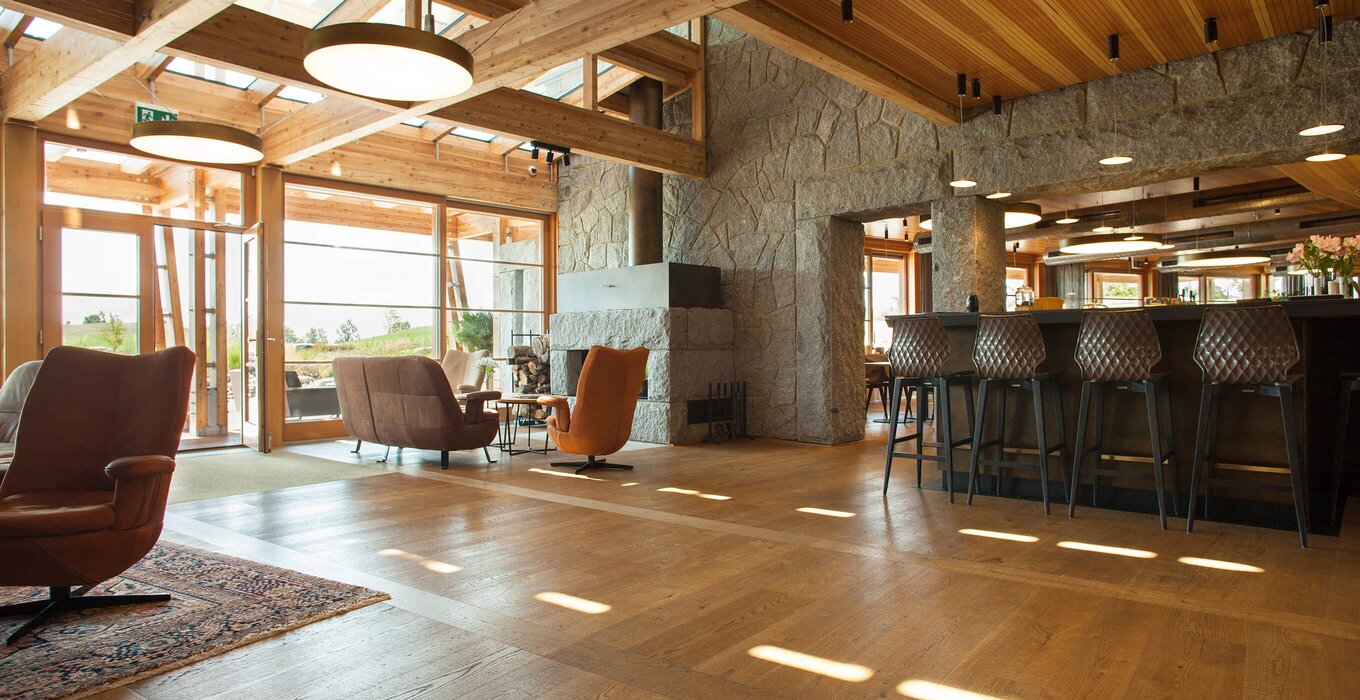
You may be working with professionals who help you to choose a wood floor for your home or commercial project. However, for those who prefer to do their research, we have compiled the most important things to know when choosing a floor on this page.
When it comes to wood, our heart beats for oak. Yes, there are certainly reasons for other woods. Perhaps you have a weakness for exotic woods, or perhaps you prefer a larch in your apartment in the mountains. However, oak reigns supreme in floors and wall cladding and can be adapted directly to any interior. Here are its main advantages:
• Durability - Oak is hard, durable, and the best local wood species to withstand changing humidity conditions.
• Oak has endless possibilities in expressing its character -from very smooth to a very rustic look. The choice of planks also plays a crucial role in the final appearance of the floor.
• Oak readily accepts coloured oils, revealing its beauty in new dimensions, from white to deep dark.
• Oak floors lend themselves to good treatment, such as brushing, planning, or sanding, to give the surface an original character.
There are two options when it comes to construction - solid wood planks or a multi-layered glued floor. The reality is that solid planks have a certain prestige in the historical context. But today's technologies can produce multi-layered floors with much better properties. The main ones are resistance to torsion and deformation due to humidity/temperature.
The tread layer of hardwood should be at least 4 mm. Then you can be sure they will last for several generations. In addition, the multi-layer construction makes it possible to produce boards with a relatively low thickness of 12 - 15 mm. These boards work well with underfloor heating and are perfectly strong at the same time.
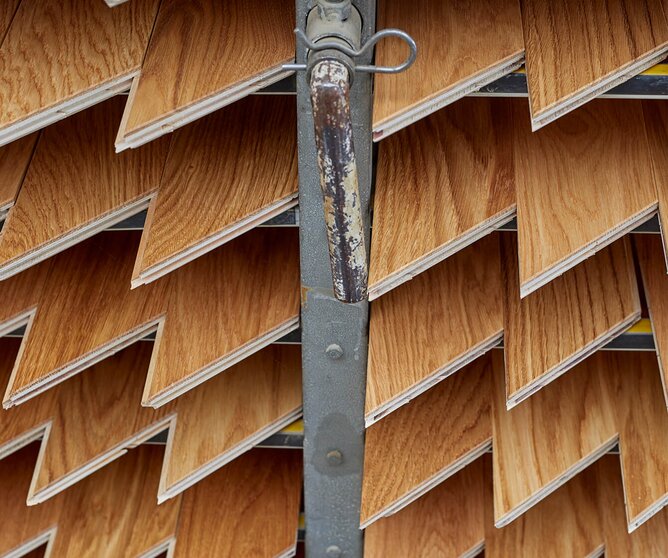
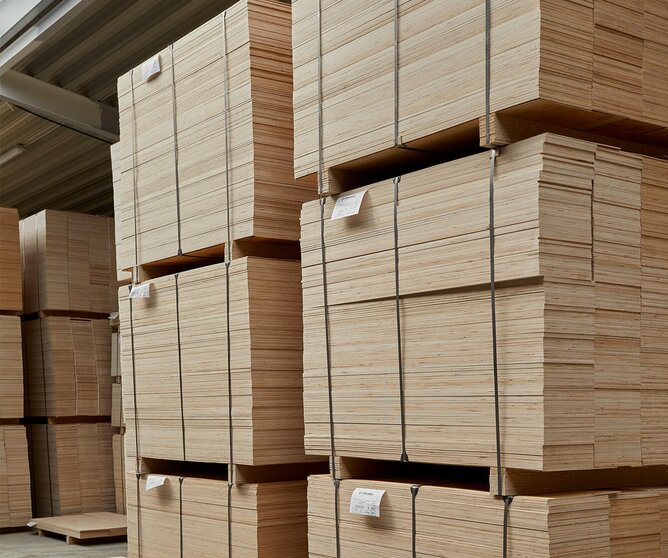
The colour of the floor is a matter of taste and the architect's intention. But there are a few things to bear in mind:
• A light-coloured floor (or panelling) optically enlarges the room, and naturally brightens it. It is therefore ideal for smaller and poorly lit rooms.
• With a very light floor, especially a bleached oak floor, it is necessary to consider, that its appearance may change a little over time. (This is the case with all natural floors, but it is the most noticeable in this case). With usage, it will take on a duller patina, and the pattern will become more pronounced. In less frequented areas, however, this change will be minimal. The surface of an oak floor can be restored over time. Restoration is much easier with oiled floors than with lacquered parquet.
• Brown and grey shades of the floor are the best choices for places with higher loads (kitchens, staircases, restaurants, and commercial areas). The darker brown and brown-grey surface, combined with a textured finish (brushing, matting), effectively hides little stains, scratches, or marks. It is an ideal choice for households with small children and pets.
• Naturally, the colours of the floorboards can be combined in the interior, as seen in some of our projects.
Oak shows its beauty with a wide range of patterns, knots, and colour variations. Several types of sorting can be chosen accordingly. It can be a floor with a very fine, subtle pattern. At the other end of the spectrum are very rustic boards with a distinctive character, full of knots, cemented cracks, and contrasts.
At the same time, there is no clear-cut answer to the question of how to adapt the choice of character to a particular interior. Even a floor with a very rustic character is often a perfect match for a modern, minimalist interior. It all comes down to what you like and what's required.
The size of the floorboards has a direct effect on how the floor looks when finished. The following rules apply:
• The wider the format you choose, the more the grain of the wood will stand out. The floor will have a more spectacular character. For wide planks, it is necessary to use wood from trees that are mature and of high value.
• The larger and more open space you have, the more it pays to use wide/long planks.
• Medium and narrow-width planks (around 150mm) are suitable for smaller rooms and corridors.
• Narrower and shorter planks are also more suitable for specific laying patterns (tree, herringbone...).
• The widths and lengths of the floorboards can be combined to create various creative patterns.
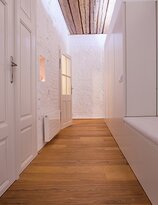
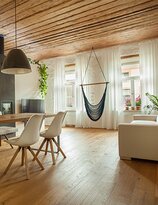
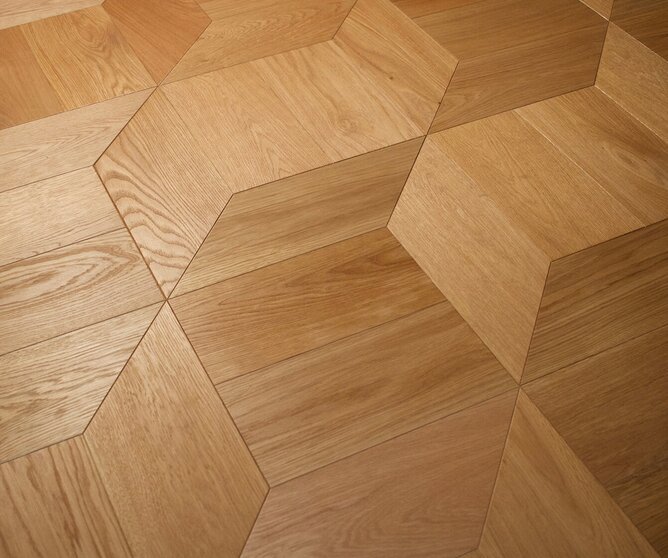
One of the most important aspects of a wooden floor is the way we treat its surface. It affects not only the appearance but also the durability of the material.
Completely smooth floors are no longer in demand. Today, at least a light brushing is standard, and effective treatments such as planning or scraping have gained in popularity.
It's not just that such a textured surface looks attractive and opens the possibilities for floor design. These treatments also increase the surface's resistance to scratches and scuffs. The more heavily the wood is brushed, the better it tolerates minor mechanical damage. That makes it the clear choice for areas of increased stress.
Then you can start to think about special finishes. The artificial weathering of oak is quite attractive, which then acts as a material exposed to the weather for years. These are very modern floors that are perfect for minimalist interiors, as well as mountain cottages or apartments.
The look of aged wood can also be achieved by hand aging - gently 'tapping' the surface to give the boards the look of antique furniture with a typical patina.
If you really want to stand out from the crowd and have something special, look to tanned oak. Flame burnt wood creates unique floors or panelling, and the effect is very original.
Finally, a word about installation. Of course, the installation pattern will have a significant impact on the look of the floor and the way it functions in the context of the interior and the property.
The most used pattern is the classic parallel pattern, which is very versatile. However, more attractive looks can be achieved with the popular French chevron pattern or the more traditional herringbone pattern, which is an authentic reflection of the historic nature of the property, for example, in townhouses.
Some interiors, however, deserve something more exceptional and unique. These include chequerboards, inlays, borders, and other specialties. Such a floor will make a powerful statement within a room.